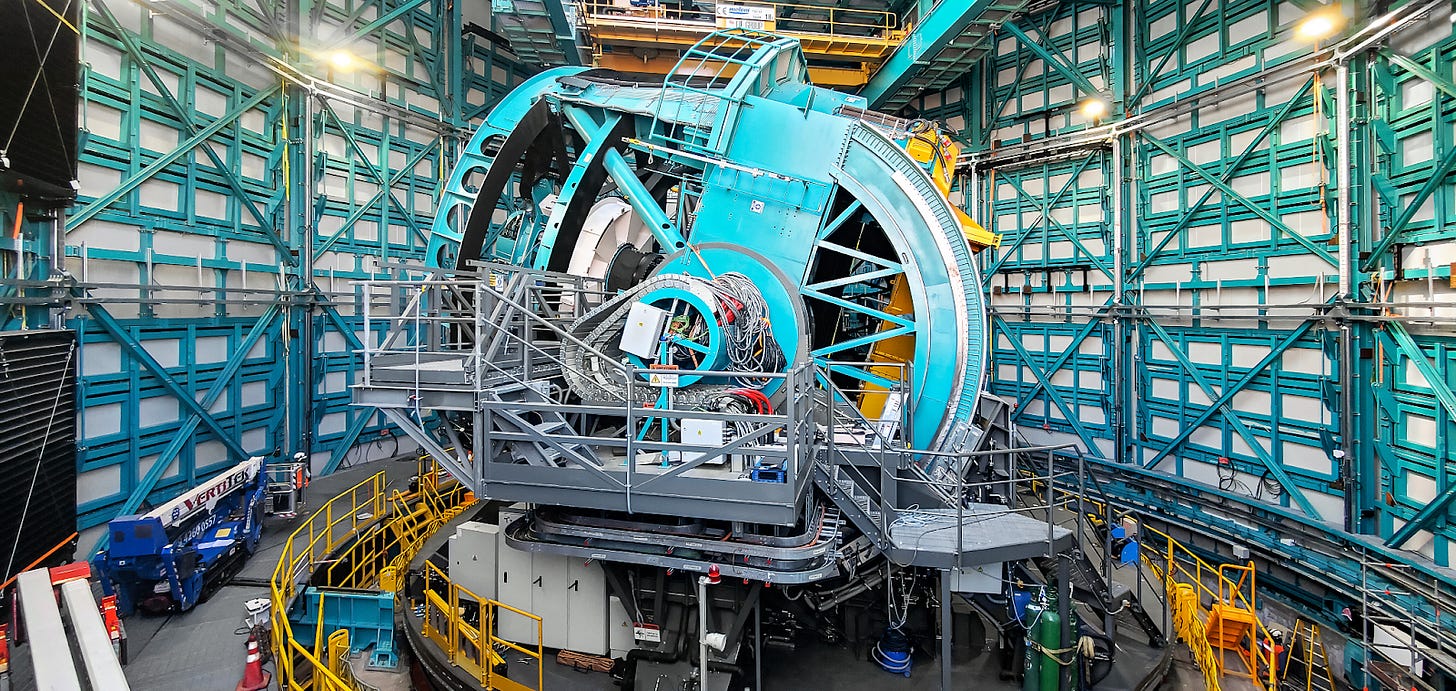Aliens, Twisting Rocks, and an Update from the Rubin Observatory
This week's Science Bits from SWTG
Can Aliens Find Us? It’s Complicated.
We look for signs of alien civilization elsewhere, but what if aliens are looking for us, too? Could they find us? Two new studies have now investigated the matter.
The first comes from researchers from UCLA and UC Berkeley. They explored the possibility that civilizations around nearby stars intercept signals from NASA's Deep Space Network (DSN), a system of powerful transmitters that communicate with five spacecraft that have left or are leaving our solar system: Voyager 1, Voyager 2, Pioneer 10, Pioneer 11, and New Horizons. The study suggests that alien eavesdroppers might be successful and that some of them may even be able to send a reply to us before the end of the century. Paper here. More here.
The second study comes from researchers from Mauritius and the U.K. It investigated how detectable radio leakage from mobile towers would be for alien civilizations around stars in our neighbourhood, including Barnard's star, six light years away from Earth. The researchers say that with a technological level similar to ours, chances are slim, but that some advanced civilizations may be able to pick up on us. Paper here. Press release here.
A Big Machine That Twists Rocks
Image: Philip Skemer, Washington University St Louis
A team of researchers at Washington University in St. Louis have developed a device that can simulate the conditions deep inside the Earth. It can heat rock to temperatures up to 1,300 °C (2,500 °F), and twist and squeeze them with a force equivalent to the weight of 100 tons. The device, called the large volume torsion (LVT) apparatus, is unique in the world and can help scientists understand how rocks deform and how faults move. The team used the LVT to study talc, a soft mineral that forms ripples and voids when compressed, which could affect how water flows through the rocks and how earthquakes happen. Paper here. Press release here.
Rubin Observatory Update
Image: Rubin Observatory/AURA/DOE/NSF
The Vera C. Rubin Observatory, a telescope under construction in Chile that will conduct a 10-year survey of the sky, has reached a major milestone. The telescope structure is now ready, and can be equipped with the camera. The Rubin Observatory will help investigate dark matter, dark energy, and other cosmic phenomena. More here.







